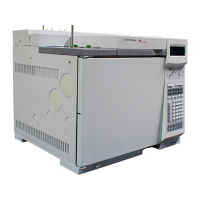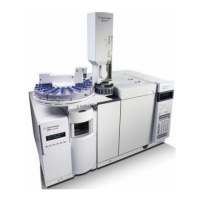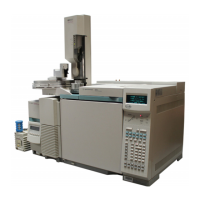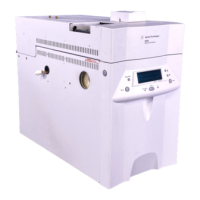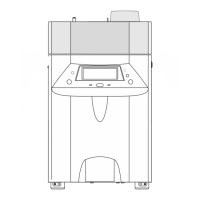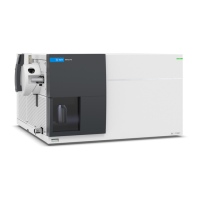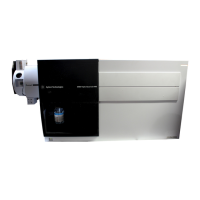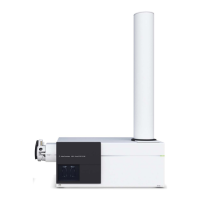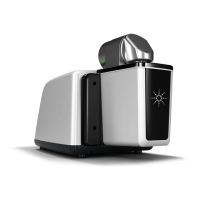45
Part 1. Electronic Pneumatic Control (EPC) Flow and Pressure Control
Interpreting flow and pressure readings
Part 1. Electronic Pneumatic Control (EPC)
The GC can electronically control all the gas flows and pressures in the
instrument. It provides:
• Flow and/or pressure control for all inlets, including flow and pressure
programming for the carrier gas through the column
• Flow control via pressure regulation across fixed restrictors for all detector
gases
• Pressure control for three auxiliary channels
• A gas saver mode to reduce carrier gas consumption with the split/splitless
inlet, PTV inlet, and volatiles interface.
• Direct entry of split ratios, provided the column is configured
The controlling hardware is mounted internally at the top rear of the instrument.
Setpoints are entered in the inlet, detector, or auxiliary control tables.
Interpreting flow and pressure readings
The EPC control board uses sensors for atmospheric pressure and the
temperature of the flow pneumatics modules to eliminate local conditions as
causes of retention time variability.
All flow and pressure displays are corrected to a defined set of conditions. These
conditions, which we call Normal Temperature and Pressure (NTP), are 25°C
and 1 atmosphere pressure. Similarly, setpoints are adjusted for the local
conditions.
Thus a flow displayed on the instrument and the flow measured with a bubble
meter may not agree, because the bubble meter readings represent local
conditions rather than NTP conditions. However, retention times become
independent of the local environment.

